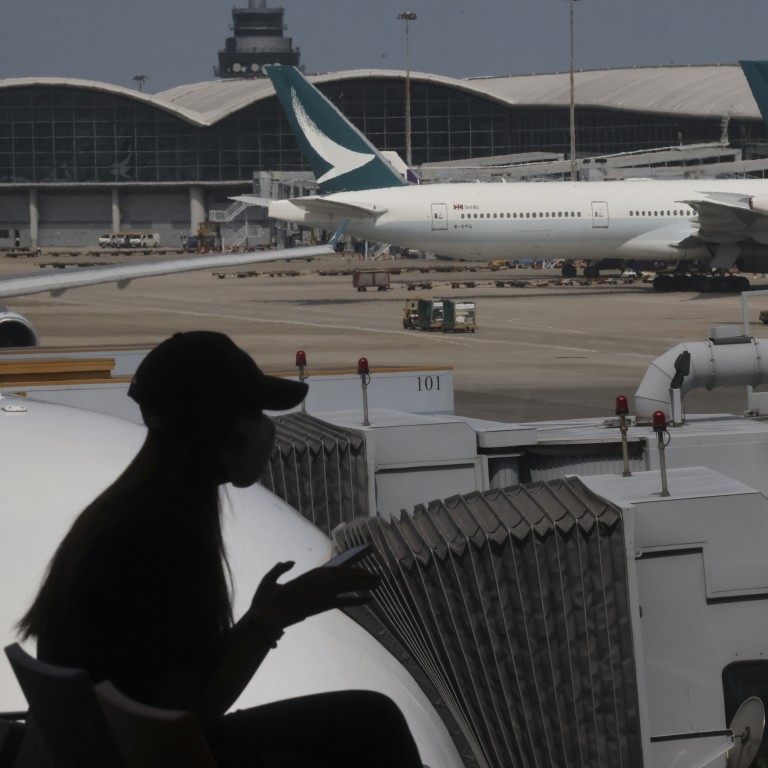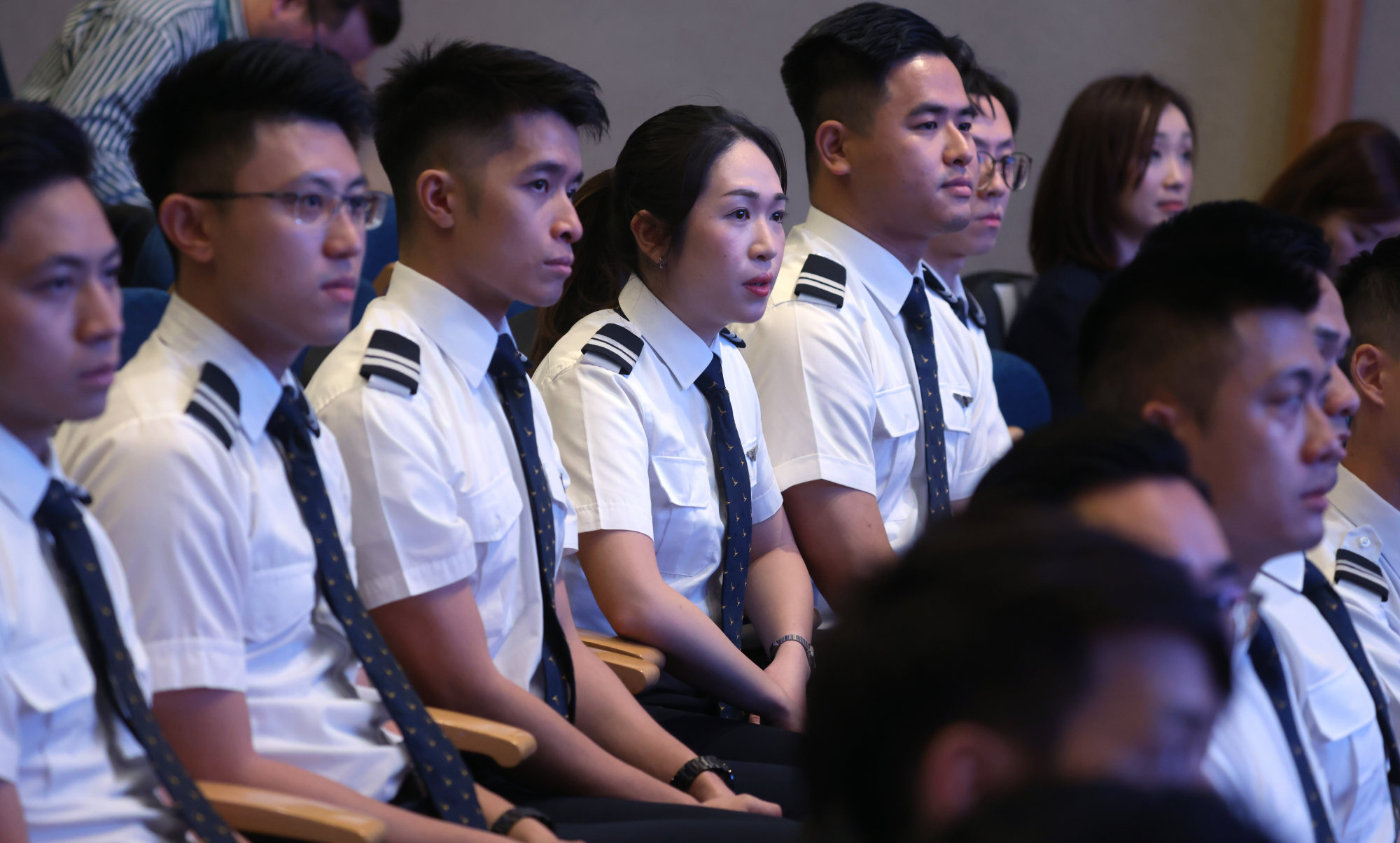
Graduate pilots help keep Hong Kong aviation sector recovery on course
- First batch of second officers under Cathay Pacific initiative will lift city as it returns to its pre-pandemic status
Hong Kong’s dream of returning to pre-pandemic status as a global aviation hub has moved closer to reality with a graduation ceremony for the first group of pilots trained under a novel integrated programme set up by Cathay Pacific Airways. The city’s flag carrier hired the 21 graduates as second officers, taking a small but significant step towards its ambitious goal of recruiting 800 cadet pilots in 2023 and 2024.
The 19 men and two women who earned their wings underwent about seven weeks of simulator training, studying theory at Polytechnic University and practising in skies over the United States and Australia. Captain Chris Kempis, director of flight operations at Cathay Pacific, said the integrated pathway made better use of the city’s “magnificent facilities and talent training”.
Running simultaneously with the pathway, Cathay’s legacy cadet programme, conducted entirely in the Australian city of Adelaide, continues. Aviation officials have also been working to expand the pool of pilots by initiating collaboration on flight training between Hong Kong and the mainland.
Cathay’s immediate goal was “definitely a challenge”, admitted Captain Ron Chan, the carrier’s deputy chief pilot for Boeing aircraft. Under its legacy cadet programme launched 35 years ago, the airline has trained about 1,000 pilots.

Now, it aims to prepare about 80 per cent of that number in just two years. However, Chan said recruitment was “on target” with more than 400 cadets already lined up this year.
The alternative training mode may help attract local recruits to join a workforce that must expand so Hong Kong can develop as an international aviation hub as designated in the national 14th five-year plan and outline development plan for the Greater Bay Area.
The city has taken steps to strengthen cooperation for cargo and passenger traffic between Hong Kong and cities in the bay area that Beijing plans to develop into an integrated economic and business hub. In August, the city connected passengers in Macau to the airport’s restricted area directly by bus via the Hong Kong–Zhuhai–Macau Bridge.
It is also ramping up aviation-related conferences in the coming months.
First batch of Hong Kong Cathay Pacific pilots graduates from training scheme
Such initiatives have led to a “stronger than expected” recovery for the Hong Kong aviation sector, according to Willie Walsh, director general of the International Air Transport Association. In July, the association revised its own projections to forecast the city would reach pre-pandemic passenger levels by the end of next year.
There is more work to be done, but seeing young Hongkongers settling into cockpit roles is a welcome sign of progress.

